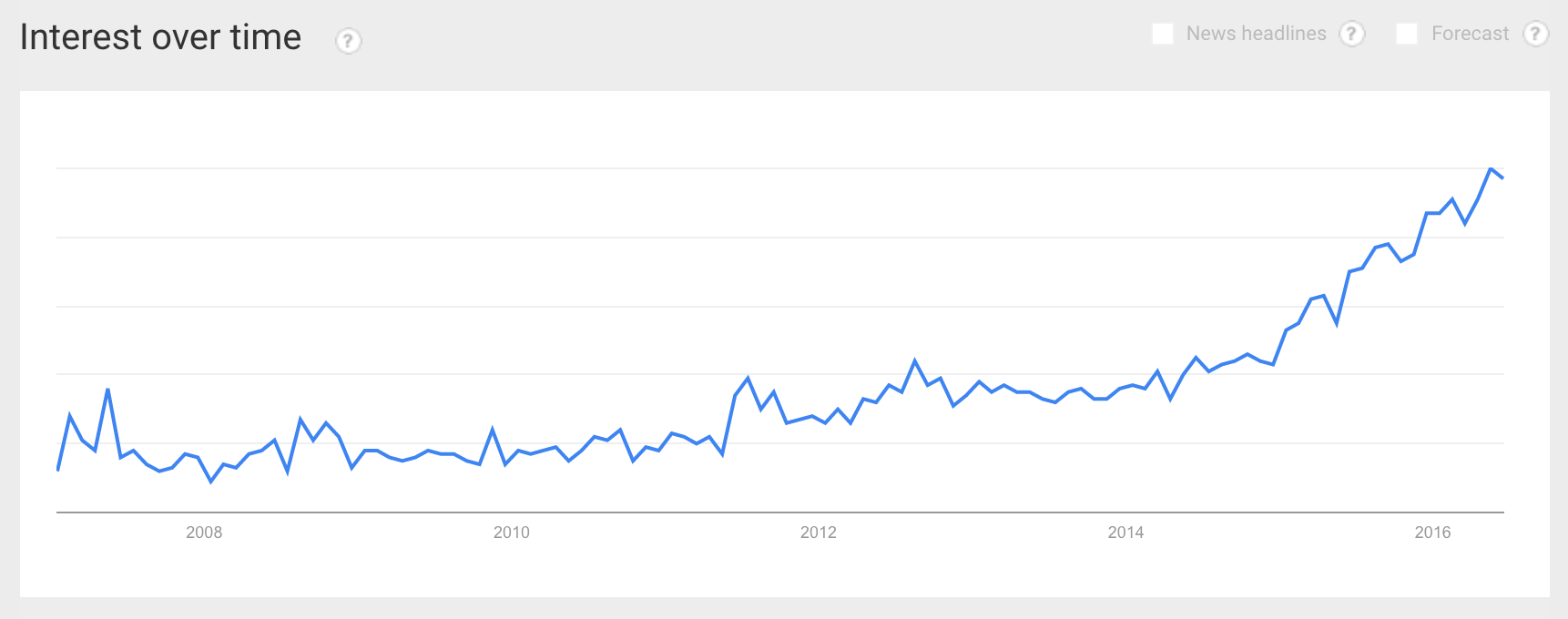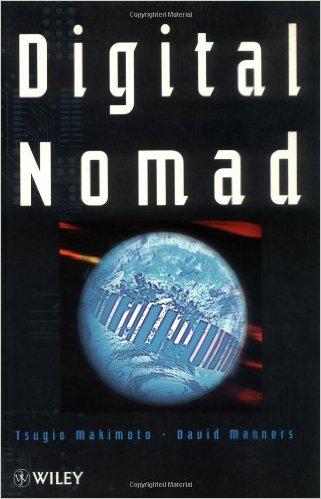The term "digital nomad" has been evolving from obscure techie reference into part of the everyday travel vernacular in recent years. This is thanks to a massive increase in the number of people living a mobile lifestyle, a seemingly endless trail of blog posts and Medium articles, and location independent community services like NomadList, the Dynamite Circle, and DNX Global, not to mention dozens - if not hundreds - of Facebook community groups.

Search volume on Google for 'digital nomad' since 2008, powered by Google Trends.
Because of the recency of this concept's pop-emergence, most people assume the term itself was invented from the ether of travel blogs in the past 5-10 years. In fact, Digital Nomad is the title of an intriguing, forward-thinking 1997 academic work by rockstar computer scientist (and electrical engineer) Dr. Tsugio Makimoto along with professional writer David Manners.

Digital Nomad (1997) by Tsugio Makimoto and David Manners.
The Vision
The central thesis of Digital Nomad is that inevitable changes in attitudes, technology, and communication in the subsequent 10 or so years will lead to new communities of itinerant remote workers, what Makimoto and Manners called "digital nomads." The authors take so-called "wanderlust" – which has made tourism one of the largest industries in the world with 1.2 billion international arrivals in 2015 – as evidence of the natural human urge to move, residual in mankind from a shared, prehistoric nomadic past. They argue that given the opportunity afforded by technological advances:
"The 21st century will be the millennium which resurrects for humans a dilemma which has been dormant for 10,000 years – humans will be able to ask themselves: “Am I a Nomad or a Settler?"
The bulk of Digital Nomad consists of observations of advances in certain facets of technology and communications systems and their predicted trajectories that would enable and encourage highly mobile lifestyles. The authors single out in particular:
- affordable and portable work devices readily available to the average consumer
- ubiquity of wireless internet
- a gargantuan (for that time) increase in bandwidth that would allow video sharing and conferencing
These three criteria have clearly been met, as laptops can be had for under US$1000 which are all capable of video conferencing with teams on Skype or Google Hangouts using the fast wireless wifi available in so many cafes and co-working spaces today. Go to any of the 500 cities listed in NomadList, and you will find digital nomads doing exactly that.
Perhaps the most interesting chapters of Digital Nomad deal with the likely concomitant effects of nomadism on the nation-state and society:
- future governments - faced with the increased mobility of people who have options regarding nationalities - will need to compete for citizens and taxes.
- nomadism will "dilute the power of nationalism" as global citizens replace an identity founded on a home country with "tribes" based on shared interests.
We’re already seeing battles for citizenship and taxation waged between states, expats, and corporations, illustrated by the fallout over the United States government’s contentious Foreign Account Tax Compliance Act (FATCA), which requires banks worldwide to divulge information on foreign bank accounts held by US citizens. FATCA has been the nail in the coffin leading thousands of expats to the renunciation of US citizenship in favor of citizenships with more tax-friendly countries that welcome expats – and their finances and businesses – with relatively open arms. Websites and services have emerged to meet the demand of facilitating the process of acquiring new residencies and citizenships (e.g., passports.io) . Estonia’s enterprising offer for e-Residency is one fascinating example of what alternative paradigms for nation-belonging might look like. The program has already accepted over 11,000 applicants.
Do Digital Nomads Exist?
So has Makimoto and Manners' vision of the digital nomad been fully realized in the communities of digital nomads we see out there today?
Well, yes and no.
As stated earlier, the three principle criteria that were laid out for a digital nomad community to emerge (affordable portable work devices, readily available wireless internet, and fast enough internet speeds for video conferencing) have become commonplace, and the numbers of people working remotely while traveling and joining digital nomad community groups are soaring.
But, the vision of Makimoto and Manners has not even come close to fruition yet. What we find most often in digital nomad communities today are people who oscillate between temporary states of digital nomadism - during which time they work while traveling for a few weeks, months, or years at a time - and relative sedentarianism, whether as an expat abroad or marked by a return to their home place. The real potential of digital nomads isn't an experimentation with these states, but rather a complete break with the sedentary lifestyle that has characterized 99.9% of the planet since the agricultural revolution. It could take generations of experimentation with these states until digital nomadism takes hold. 10,000 year old habits are hard to break.
The roots for an age of the digital nomad are firmly taking hold. Whether or not they grow into their full potential as seen by Makimoto and Manners is something that only time will tell. If they do, digital nomadism will change society as we know it.